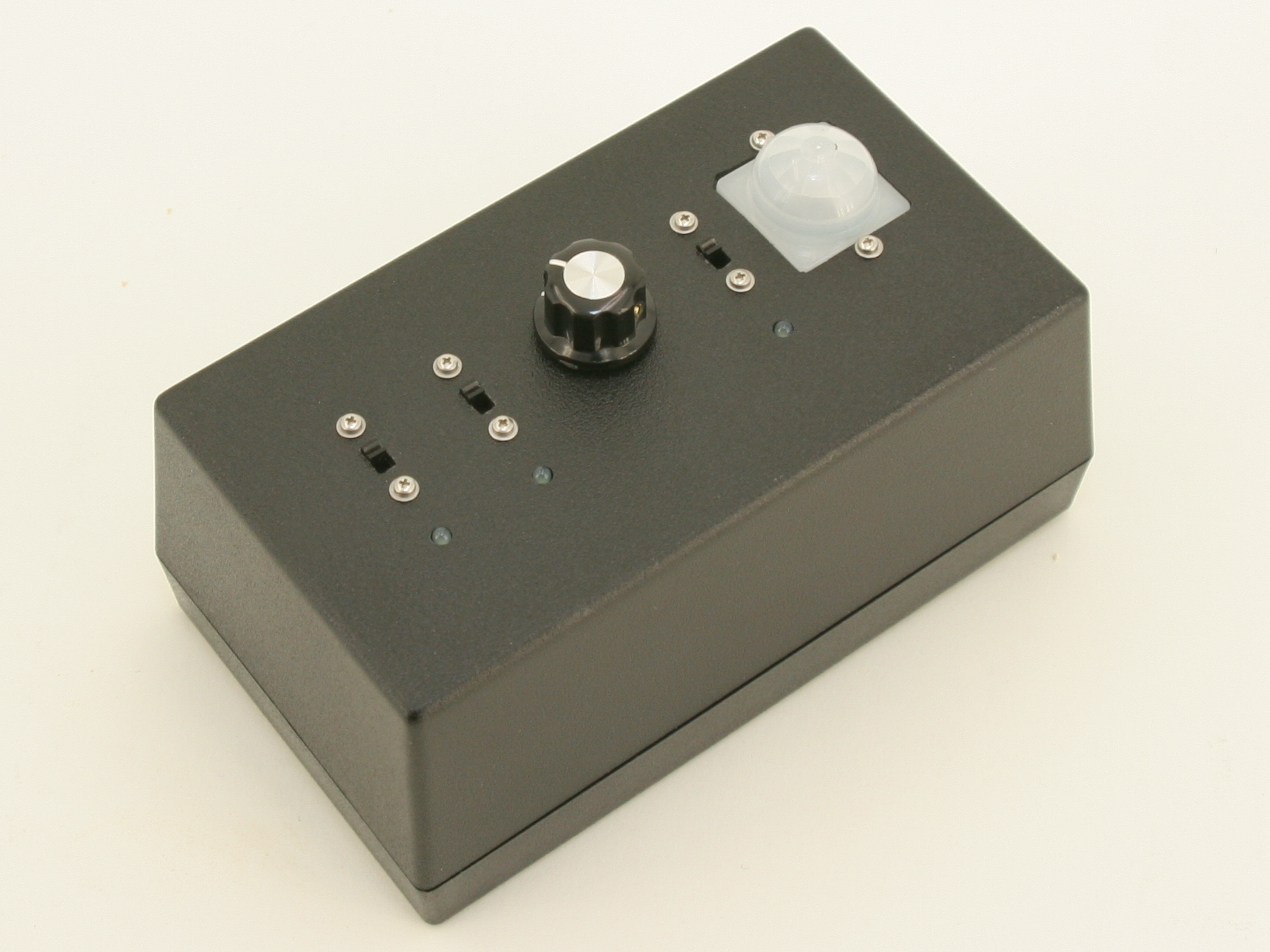Mount the switches onto the project box by sliding each screw through a washer, the box, and switch. Then tighten the screw with nuts.
Mount the potentiometer onto the box with a washer (that came with it) on both side of the box. If the potentiometer doesn’t fit, enlarge the hole for the flange of the pot by running a 7/64″ or 1/8″ drill through the hole. Screw on the nut to secure the pot in place.
Place the LEDs onto their holes with the positive (longer) leads facing towards the wall of the box. Then hot glue them in place.
Leave the PIR sensor alone for now.
